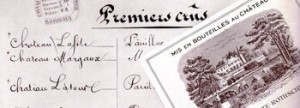Thinking about shopping during your next trip to Paris but don’t want to ruin your budget? Then avoid the boutiques of the expensive designer clothes where wealthy tourists are ready to pay exorbitant prices. Do instead what many elegant yet budget-conscious Parisian women do: turn to marques dégriffées (shops of discounted designer clothes from going-out-of-business sales), and dépôt-ventes (consignment shops where wealthy Parisians’ cast-offs go for a fraction of their original retail price). Shopping in either is shame-free; in fact, it’s considered shabby chic.
Looking for something to wear to that special event this summer? Try rummaging through the marques degriffées boutique Fifty-Fifty on rue Corvetto (8th); it’s like raiding your friend’s closet and paying a mere pittance to call these designer clothes your own. Regularly rotating designers like Givenchy and Marc Jacobs, Fifty-Fifty always has something for special occasions or night on the town.
You might also just walk up and down the Rue d’Alésia in the 14th, between the Avenue du Maine and the rue Raymon-Losserand (metro: Alésia or Plaisance): there are several stores, shops, and open markets here that show either last year’s collections, marques degrifées, or bargain-priced shipments for quick sales.
Consignment shops are plentiful. The dépôt-ventes will often not accept anything less than designer clothes of the highest brand, and even then, they must be spotlessly clean, with no buttons missing or threads pulled, so you are assured the highest quality in used clothing.
The Dépôt-Vente de Buci-Bourbon is a like a garage sale slumming with a champagne flute in hand. All the great designer clothes are found here, perhaps only a season or two past. You may find an exquisite silk Christian Dior dress with a matching jacket or duster, or a classic Channel two-piece suit that never outwears itself. Another excellent one is Chercheminippes, found at 102, 109, 111, 112, 114, 124 rue du Cherche-midi, Paris 6th. There are several stores here: for women, for men, for children, accessories, shoes, etc. For fabulous fur values, try Michel’s Artisan Fourrure at 130 ave Mozart in the 16th (métro Chardon Lagache or Eglise d’Auteuil). Have your own mink coat restored there, or shop for a great value right there. And anywhere along the beautiful pavilion of the Palais Royal you’ll find several boutiques selling yesterday’s styles at yesterday’s prices.
And if you find the perfect quelque chose in one of these shops, play the Parisian game: never let on where you purchased it. Budget shopping done right.
Click here for more information on great group tours to Paris
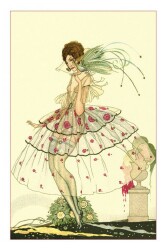
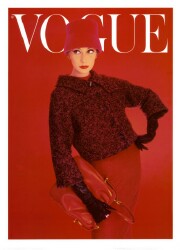
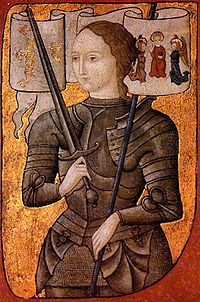 In the city of Rouen in Normandy, Joan of Arc was condemned for heresy and burned at the stake by the English occupiers of that city, in 1431. Here you can visit several sites commemorating the heroine: the Pucelle’s Tower where she was imprisoned before her trial, the Boideldieu Bridge where her ashes were scattered into the Seine, and the flower garden at the Place du Vieux-Marché which now marks the place where she died.
In the city of Rouen in Normandy, Joan of Arc was condemned for heresy and burned at the stake by the English occupiers of that city, in 1431. Here you can visit several sites commemorating the heroine: the Pucelle’s Tower where she was imprisoned before her trial, the Boideldieu Bridge where her ashes were scattered into the Seine, and the flower garden at the Place du Vieux-Marché which now marks the place where she died.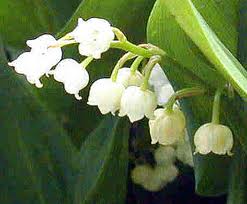 flowers on May 1st, 1561, as a good luck charm. Ever since, it is traditional for family, friends and neighbors to exchange a small sprig as a goodwill gesture. You may find lily-of-the valley growing naturally in woods and gardens in France, but don’t worry: vendors will be selling bunches of the flower on every street corner.Other May holidays include: May 8th, la Fete de la Victoire which commemorates the end of World War II, the Catholic holidays of Ascension and Pentecost, and finally, Mother’s Day, which always falls on the last Sunday of the month.
flowers on May 1st, 1561, as a good luck charm. Ever since, it is traditional for family, friends and neighbors to exchange a small sprig as a goodwill gesture. You may find lily-of-the valley growing naturally in woods and gardens in France, but don’t worry: vendors will be selling bunches of the flower on every street corner.Other May holidays include: May 8th, la Fete de la Victoire which commemorates the end of World War II, the Catholic holidays of Ascension and Pentecost, and finally, Mother’s Day, which always falls on the last Sunday of the month.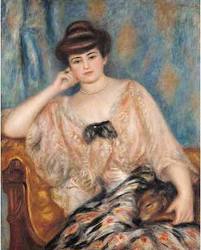
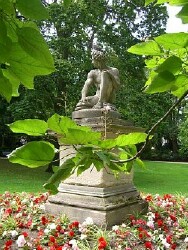 And if you’re an animal lover you won’t want to miss, “Beauté Animale” (Animal Beauty) at the Grand Palais which presents 130 paintings, drawings, sculptures, engravings and photographs of animals, from the Renaissance to the present in works by Courbet, Durer, Degas, Gericault, and others. Ends July 16th, so you have to hurry!
And if you’re an animal lover you won’t want to miss, “Beauté Animale” (Animal Beauty) at the Grand Palais which presents 130 paintings, drawings, sculptures, engravings and photographs of animals, from the Renaissance to the present in works by Courbet, Durer, Degas, Gericault, and others. Ends July 16th, so you have to hurry!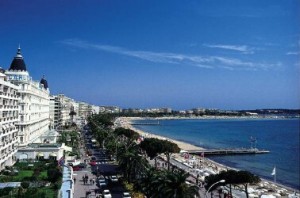
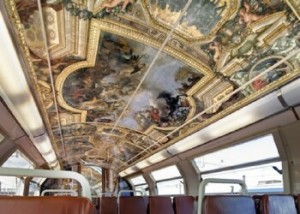
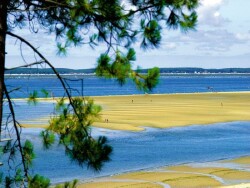 On the Atlantic coast not far from Bordeaux lies the beautiful seaside town of Arcachon, well-known for its oyster culture, its fishing harbor, and its bathing resort where sea winds mix with the fresh scent of pine trees from the nearby forest of the Landes.
On the Atlantic coast not far from Bordeaux lies the beautiful seaside town of Arcachon, well-known for its oyster culture, its fishing harbor, and its bathing resort where sea winds mix with the fresh scent of pine trees from the nearby forest of the Landes.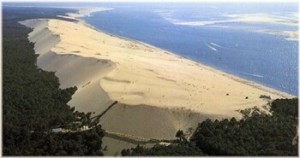
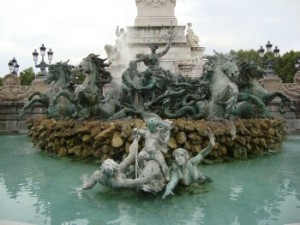
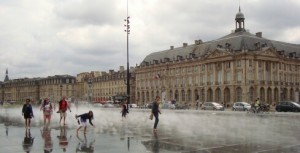
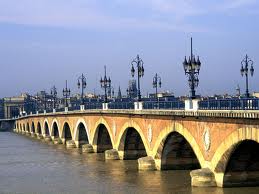 Part of the enchantment of the city of Bordeaux is its fascinating history. In addition to its excellent location on the Garonne River at the mouth of the Gironde estuary, its turbulent but compelling past may be summed up in three stages:
Part of the enchantment of the city of Bordeaux is its fascinating history. In addition to its excellent location on the Garonne River at the mouth of the Gironde estuary, its turbulent but compelling past may be summed up in three stages: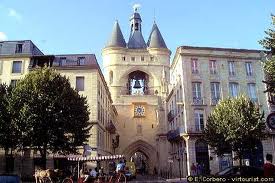
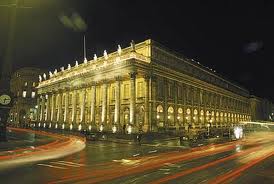
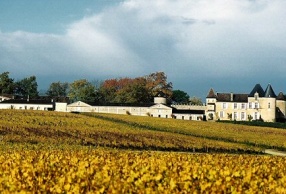 The best known vineyard in Sauterne region is the beautiful Chateau d’Yquem which once belonged to Eleanor, Duchess of Aquitaine. After she and King Louis VII of France divorced and she married Henry Plantagenet, the future King Henry II of England in 1154, the chateau came under British dominion until the end of the Hundred Years War in 1453, a most royal and British estate. Back under French control in 1593, the chateau has been improved and modified several times under the watchful eye of the Sauvage and Lur-Saluces families, and has produced award-winning wines over the centuries. Thomas Jefferson bought several cases in 1784, proclaiming it the best wine of Bordeaux. Today partially owned by the luxury marketing group LVMH, it possesses approximately 226 acres of vineyards, although not all are in production at any one time, allowing for elimination of elderly vines and replanting in fallow plots. The mix of the grapes is 80% Semillon and 20% Sauvignon Blanc, with none of the permitted Muscadelle. The grapes are harvested by hand in several different batches and fermented in oak, usually about three years per barrel.
The best known vineyard in Sauterne region is the beautiful Chateau d’Yquem which once belonged to Eleanor, Duchess of Aquitaine. After she and King Louis VII of France divorced and she married Henry Plantagenet, the future King Henry II of England in 1154, the chateau came under British dominion until the end of the Hundred Years War in 1453, a most royal and British estate. Back under French control in 1593, the chateau has been improved and modified several times under the watchful eye of the Sauvage and Lur-Saluces families, and has produced award-winning wines over the centuries. Thomas Jefferson bought several cases in 1784, proclaiming it the best wine of Bordeaux. Today partially owned by the luxury marketing group LVMH, it possesses approximately 226 acres of vineyards, although not all are in production at any one time, allowing for elimination of elderly vines and replanting in fallow plots. The mix of the grapes is 80% Semillon and 20% Sauvignon Blanc, with none of the permitted Muscadelle. The grapes are harvested by hand in several different batches and fermented in oak, usually about three years per barrel.